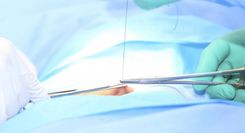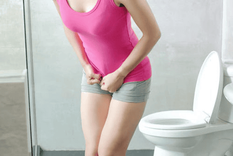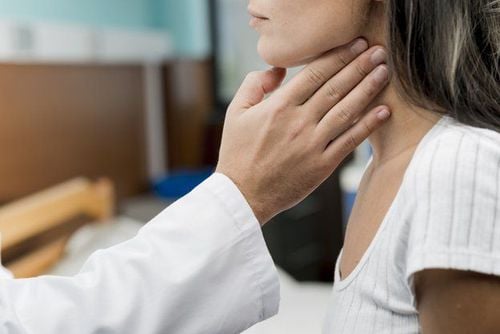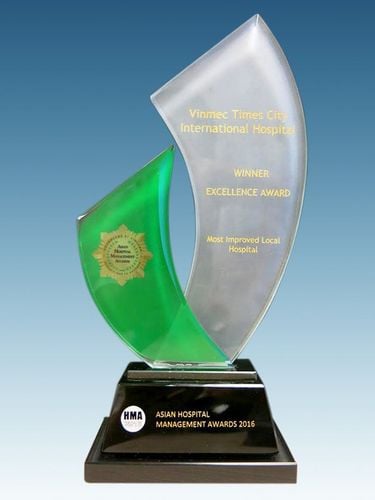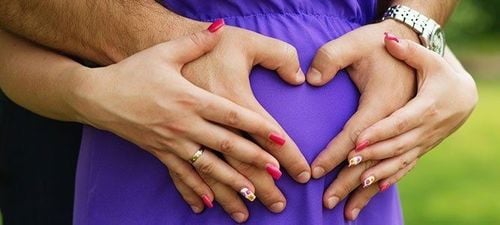This article has been professionally reviewed by obstetricians and gynecologists from the Obstetrics and Gynecology Department at Vinmec Hai Phong International General Hospital.
Postpartum urinary retention is defined as the condition where a new mother cannot empty her bladder when it is full, which can occur after natural childbirth, assisted delivery, or a cesarean section (C-section), known as urinary retention after C-section. This is a dangerous medical condition that requires immediate attention and treatment to avoid undesirable complications.
1. Postpartum urinary retention
Postpartum urinary retention is a condition involving urinary disorders where the patient feels the urge to urinate but is unable to do so. Postpartum urinary retention usually occurs around 6 hours after giving birth, and patients often experience lower abdominal pain and may show signs of bladder distention during a clinical examination.
In clinical practice, postpartum urinary retention is divided into three main types:
- Symptomatic postpartum urinary retention: The patient cannot urinate about 6 hours after childbirth, or after the removal of a urinary catheter, the patient still cannot urinate.
- Asymptomatic postpartum urinary retention: The symptoms of urinary retention are not obvious, but an ultrasound shows a residual urine volume greater than 150ml. This is the most common type of postpartum urinary retention, accounting for approximately 70% of cases.
- Prolonged postpartum urinary retention: The patient cannot urinate for an extended period, requiring a urinary catheter to be placed for several days. This is the least common type of postpartum urinary retention.
According to some studies, there are many causes of postpartum urinary retention, with the most common issues being:
- During labor, the baby's position can cause the head to press against the mother's bladder neck or urethra, leading to urine retention in these areas. As a result, the bladder becomes distended and loses its tone, ultimately causing bladder neck muscle spasms and urinary retention.
- If the mother's perineum is torn during childbirth and needs to be stitched, the sutures may cause swelling and pain, making the mother hesitant to push while urinating, leading to postpartum urinary retention.
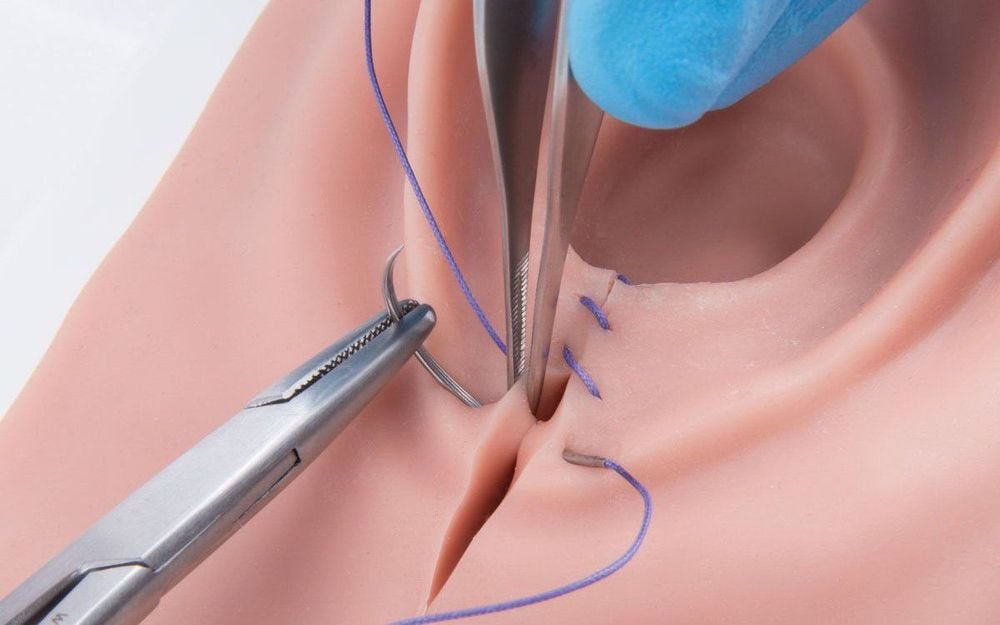
- Additionally, after giving birth, the bladder may lose its sensitivity to the stimulation caused by being full, leading to postpartum urinary retention.
- Some patients require multiple catheterizations after childbirth, which can lead to bladder infections, another cause of postpartum urinary retention.
- Damage to the pelvic nerves during childbirth
There are several risk factors that can make postpartum urinary retention more likely:
- First-time mothers
- Patients who received epidural or spinal anesthesia
- Prolonged labor compared to normal physiological labor.
- Deliveries that required the use of instruments like vacuum extractors or forceps.
- Tears in the perineum or swelling and edema of the vulva during childbirth.
- Patients with a history of urinary tract infections or other urinary-related conditions.
- Bladder overdistension during labor.
- C-section deliveries, leading to postoperative urinary retention.
- Newborns weighing more than 4000 grams.
2. Postpartum urinary retention after C-section
In addition to the common occurrence of urinary retention after natural childbirth, it can also happen after a C-section due to several factors:
- Patients undergoing anesthesia and analgesia: The use of spinal anesthesia with Bupivacaine and Fentanyl, which are opioid medications, is thought to cause postpartum urinary retention in approximately 10% - 15% of cases. Therefore, it is important to monitor the patient's urinary retention until the effects of the medication have worn off and are no longer present in the body.
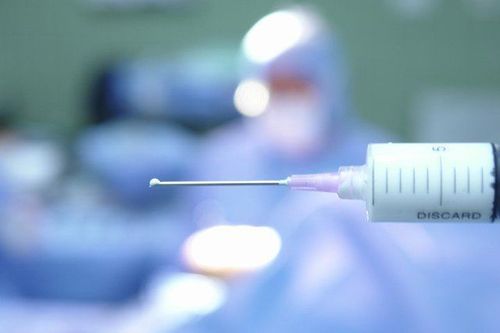
- Postpartum anxiety after a C-section can also lead to urinary retention.
- Certain procedures during a C-section, if done too forcefully, can damage the bladder, causing it to become bruised or paralyzed, resulting in the patient losing the ability to urinate normally. For instance, if the Foley catheter is not properly secured to the patient's thigh during the C-section, the full urine bag can pull on the catheter, compressing the bladder neck and causing swelling that leads to urinary retention. Additionally, improper removal of the catheter, such as not deflating the balloon before pulling it out, can also cause urinary retention in C-section patients.
3. Is postpartum urinary retention dangerous?
If postpartum urinary retention is not promptly identified and properly managed, it can significantly impact the mental well-being of the new mother. Additionally, postpartum urinary retention can disrupt daily activities, affect postpartum recovery, and create challenges in tasks related to the newborn, such as breastfeeding and infant care. Therefore, it is essential to treat postpartum urinary retention as soon as possible to prevent unwanted complications such as:
- Bladder paralysis
- Bladder rupture
- Urinary tract infections
- Ureteral reflux
- Hydronephrosis
- Acute or chronic kidney failure
- Urinary incontinence
- Difficulty urinating
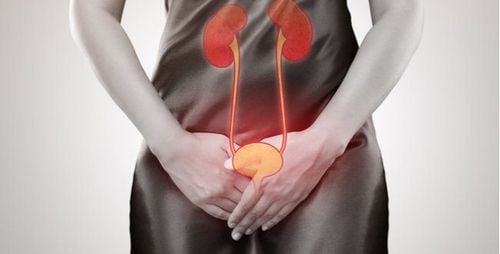
4. Diagnosis of Postpartum urinary retention
To diagnose postpartum urinary retention, the patient should exhibit certain clinical and subclinical symptoms:
Clinical symptoms:
- Lower abdominal pain
- Urgency to urinate with small, frequent amounts of urine
- Inability to urinate for at least 6 hours after childbirth
- Inability to urinate after catheter removal in cases of postpartum urinary retention following a C-section
- Feeling that the bladder is not completely empty after urination.
- Possible signs of bladder distention during a physical examination.
- A high and displaced uterus
Paraclinical finding:
- Ultrasound showing a residual urine volume greater than 150ml
5. Treatment of Postpartum urinary retention
The treatment principles for postpartum urinary retention after a C-section include four main aspects:
- Establish a regular urination habit to enhance the urination reflex
- Use antibiotics to prevent infections caused by residual urine in the bladder
- Use anti-inflammatory medications to prevent swelling and compression of the bladder neck
- Utilize methods to increase bladder tone to help the bladder contract normally.
Methods for treating postpartum urinary retention after C-section are as follows:
Non-invasive urinary urination habit support:
- Encourage the patient to move and squat
- Drink plenty of water, about 2.5L – 3L per day.
- Pour warm water over the vulva and try to urinate while the water is running
- Apply a warm compress to the lower abdomen
- While urinating, apply pressure to the bladder base
- Apply a cold compress to the perineum if it is swollen.

Invasive methods:
- Insert a urinary catheter 6 hours post-delivery to prevent excessive bladder distention. Ensure sterile procedures are followed and the catheter is of an appropriate size to avoid any damage to the urethra and bladder neck.
- Leave the urinary catheter in place, unclamping it every 3 hours to help the bladder regain its urination reflex.
Some supportive medications:
- Oral pain relievers or rectal suppository pain relief.
- Anti-inflammatory medications like Alphachymotrypsin reduce swelling.
- Antibiotics to prevent infection.
- Medications to enhance bladder tone, such as Prostigmin or Xatral.
Other methods:
- Acupuncture
- Conducting urine tests and cultures to provide timely antibiotic treatment if a patient has prolonged catheterization and an infection occurs.
6. Conclusion
Postpartum urinary retention, especially after a C-section, is a common condition that occurs about 6 hours after childbirth. It affects a woman's ability to urinate and can impact her mental wellbeing and postpartum recovery. Therefore, early detection and treatment of postpartum urinary retention are crucial to prevent undesirable complications and help new mothers recover quickly.
Vinmec International General Hospital is a top-quality healthcare facility in Vietnam, staffed with highly trained and experienced doctors and medical professionals, both domestically and internationally.
The hospital is equipped with state-of-the-art medical devices that can quickly detect complex and dangerous diseases, providing effective support for diagnosis and treatment. The clean and quiet hospital environment offers comfort, friendliness, and peace of mind to patients.
To arrange an appointment, please call HOTLINE or make your reservation directly HERE. You may also download the MyVinmec app to schedule appointments faster and manage your reservations more conveniently.
